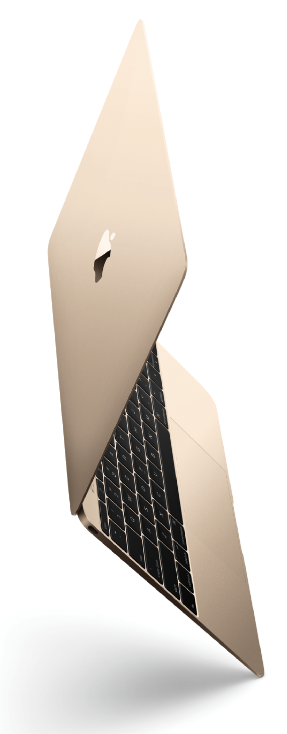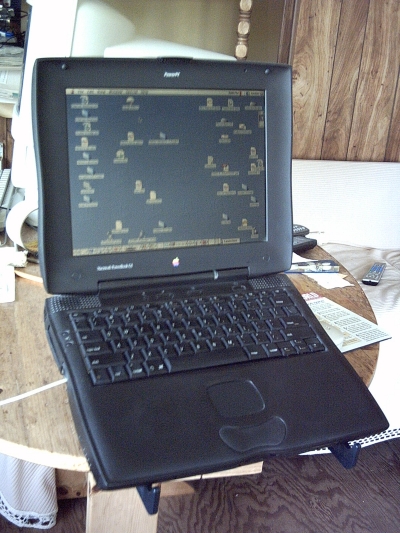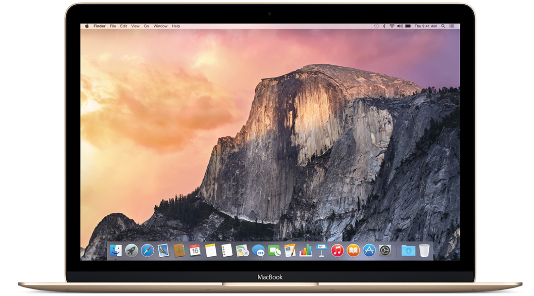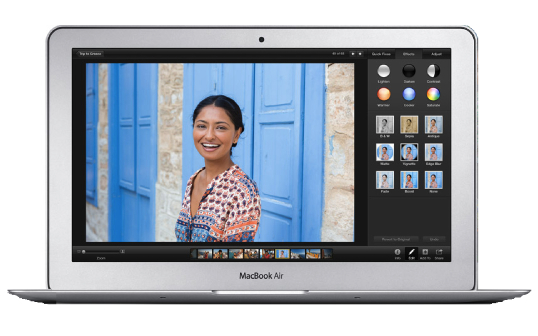Minimalist MacBook Confirms Death of Steve Jobs’s digital hub Concept – The ‘Book Mystique
ReadWrite’s Adriana Lee has posted a eulogy for the “Digital Hub” concept Steve Jobs first proposed back in 2001, declaring the new 12-inch MacBook with its single, over-subscribed USB-C port to be the final nail in Digital Hub’s coffin.
Fourteen years ago, at Macworld (before Apple bailed on the event) Mr. Jobs laid out a roadmap that would guide Apple’s marketing strategy through the pre-iPhone years, positioning the personal computer as a mothership device of sorts anchoring an array of peripheral and ancillary digital devices that would connect to the Mac which would store, organize and manage their data and software maintenance; ergo a “digital hub.” Macs of the day were well-equipped to fulfill such a role, with USB for low bandwidth stuff Ethernet for hard wired networking and Apple-developed FireWire as a high speed data interface.
“We are living in a new digital lifestyle with an explosion of digital devices. It’s huge. And we believe the PC or more importantly the Mac can become the digital hub of our new emerging digital lifestyle, with the ability to add tremendous value to these other digital devices,” Jobs allowed.
 However, Ms. Lee observes that current CEO Tim Cook has now “officially retired” the Mac as digital hub paradigm by releasing a new premium laptop with a single port, calling the new 12-inch MacBook “the future of the notebook” implying none too subtly that port minimalism will be the way of the future.
However, Ms. Lee observes that current CEO Tim Cook has now “officially retired” the Mac as digital hub paradigm by releasing a new premium laptop with a single port, calling the new 12-inch MacBook “the future of the notebook” implying none too subtly that port minimalism will be the way of the future.
She is of course right, on the point. Indeed, we’ve been hearing little of “digital hub” for years, what with Apple’s commitment to wireless and the Cloud, and diminishing hardware support for wired connectivity. However, was rather partial to the digital hub concept, and whatever my number one Mac happens to be at the time continues to serve in that role to some degree; managing and backing up my iOS devices, storing and working with my photos, editing and organizing the contents of my Dropbox folder with a real directory interface and so forth.
I’ve been cautious about flying into the CLoud, and have never bothered to activate an iCloud account, although I suppose someday I’ll get around to it. However, I’m a major fan of Dropbox for keeping working files synchronized across my various devices, and I’ve come to depend exclusively on Webmail for email aside from one account configured in the Mail app on my iPad mainly for emailing photos, both to myself and others.
Adriana Lee sees dependence on wireless and the Cloud as an enabler for Apple’s being able to offer lower powered Macs with fewer connectivity features and less content being sold at the same or higher price points of course improves Apple’s margins. Thunderbolt, a “next big thing” of the not too distant past, seems to be getting ushered out in favor of do-all USB-3, which appears destined to supersede even Apple’s excellent MagSafe charge cord technology. (Photo Courtesy Apple)
As Ms. Lee observes,” the hub has moved from local computing in our machines and gadgets, to the cloud. There’s no need for a beefy processor or numerous ports when online services do the heavy lifting for us. The Internet ably manages our media and other personal data…….” — a trend she sees as having plenty of growth potential.
Unfortunately , for some of us, a speed bump (literally) in the road to Cloud adoption is that the Internet is not such an able manager of data — especially for large data transfers when time is of the essence. I live in a seriously rural area where the only available choices for Internet providers are tower based wireless and satellite — both technically broadband but neither terribly speedy. The satellite service I use is sufficient for text file transfers using Dropbox, but leisurely when it comes to transferring large files, and I don’t have the patience to attempt drive or partition backups via the Cloud with this setup.
Nevertheless, that’s the way the world is headed. The iPhone, and subsequently the iPad as well, combined with the ascendency of the Cloud, have changed the paradigm profoundly.
 Superficially the clamshell laptop form factor remains recognizable, but today’s MacBooks Air and Pro are very different machines from my old WallStreet and Pismo PowerBooks, and the new MacBook arguably has as much or more in common with the iPad than it does with its seven-pound WallStreet PowerBook behemoth ancestor bristling with I/O ports and expansion slots and bays: Ethernet, SCSI, ADB, Serial DIN 8, VGA, S-Video, even a primitive wireless file transfer protocol in the form of an infrared port. USB, FireWire, FAX modem and other support could be added via the WallStreet’s two PCMCIA expansion card slots, and the two removable device expansion bays could handle a variety of optical, floppy media, and hard drives, or two batteries, the latter which could provide in the neighborhood of eight to ten hours battery runtime — or about the same as the 2015 MacBook offers, along with the opposite extreme in minimalist connectivity and expandability.
Superficially the clamshell laptop form factor remains recognizable, but today’s MacBooks Air and Pro are very different machines from my old WallStreet and Pismo PowerBooks, and the new MacBook arguably has as much or more in common with the iPad than it does with its seven-pound WallStreet PowerBook behemoth ancestor bristling with I/O ports and expansion slots and bays: Ethernet, SCSI, ADB, Serial DIN 8, VGA, S-Video, even a primitive wireless file transfer protocol in the form of an infrared port. USB, FireWire, FAX modem and other support could be added via the WallStreet’s two PCMCIA expansion card slots, and the two removable device expansion bays could handle a variety of optical, floppy media, and hard drives, or two batteries, the latter which could provide in the neighborhood of eight to ten hours battery runtime — or about the same as the 2015 MacBook offers, along with the opposite extreme in minimalist connectivity and expandability.
Speaking of which, I could upgrade the WallSteet’s RAM and processor, or swap in a different hard disk drive in about five and 20 minutes respectively. By contrast, the 2015 MacBook Is not upgradable at all in internal spec., and do it yourself repairs are out of the question.
It is also a highly questionable value at the current price points. This observation in Appleinsider’s review of the new MacBook particularly resonated with me:
“Though it’s a sign of things to come, for now the MacBook is stuck in the middle, too underpowered for serious users, and too costly for most casual use. Only the most aggressive of early adopters, and those who crave portability above all else, should buy this new MacBook. The rest of the world can wait to catch up to the future.”
Too true. If you need full-fledged Mac OS X power in a subcompact laptop, it can be had for as little as $899 in the non-Retina 12-inch MacBook Air — $400 less than the entry level 12-inch MacBook. That saving can be banked or used to purchase an iPad mini as the other member of a portable device tag team.
But the MacBook is thin and light. Ms. Lee advises that we should think of it more as skinnier Chromebook+ than as a full-fledged laptop, observing now that the PC is no longer a hub in the greater scheme of things, its just another spoke among the many alternatives for accessing the Internet, where more and more our lives are being focused. She notes that Google has embraced this reality with the Chromebook and suggests that Apple now has as well with the new MacBook.
She’a no doubt correct. I’ll remember the digital hub concept fondly, but its brief day in the sun is past, and the forecast is increasingly Cloudy.


